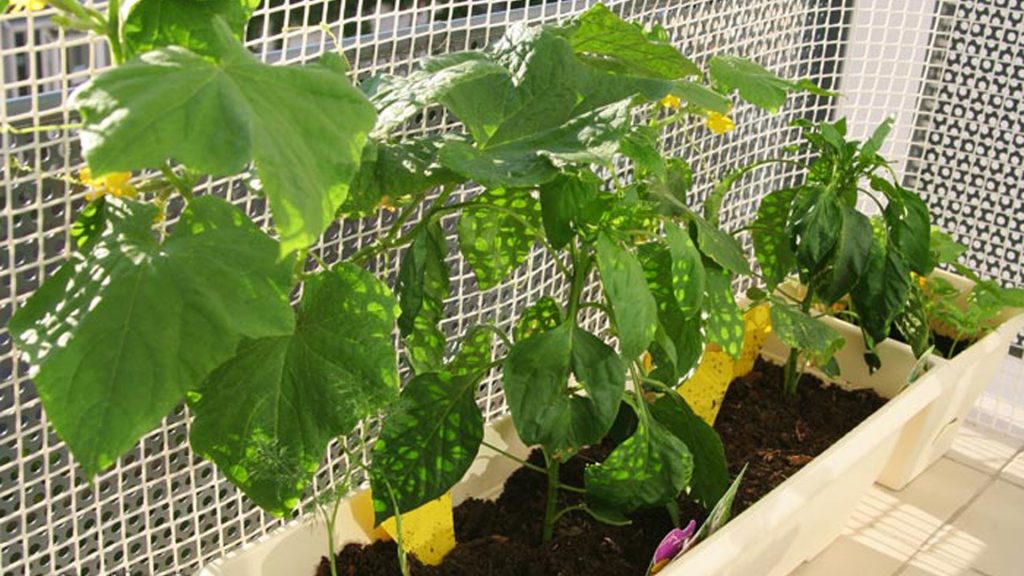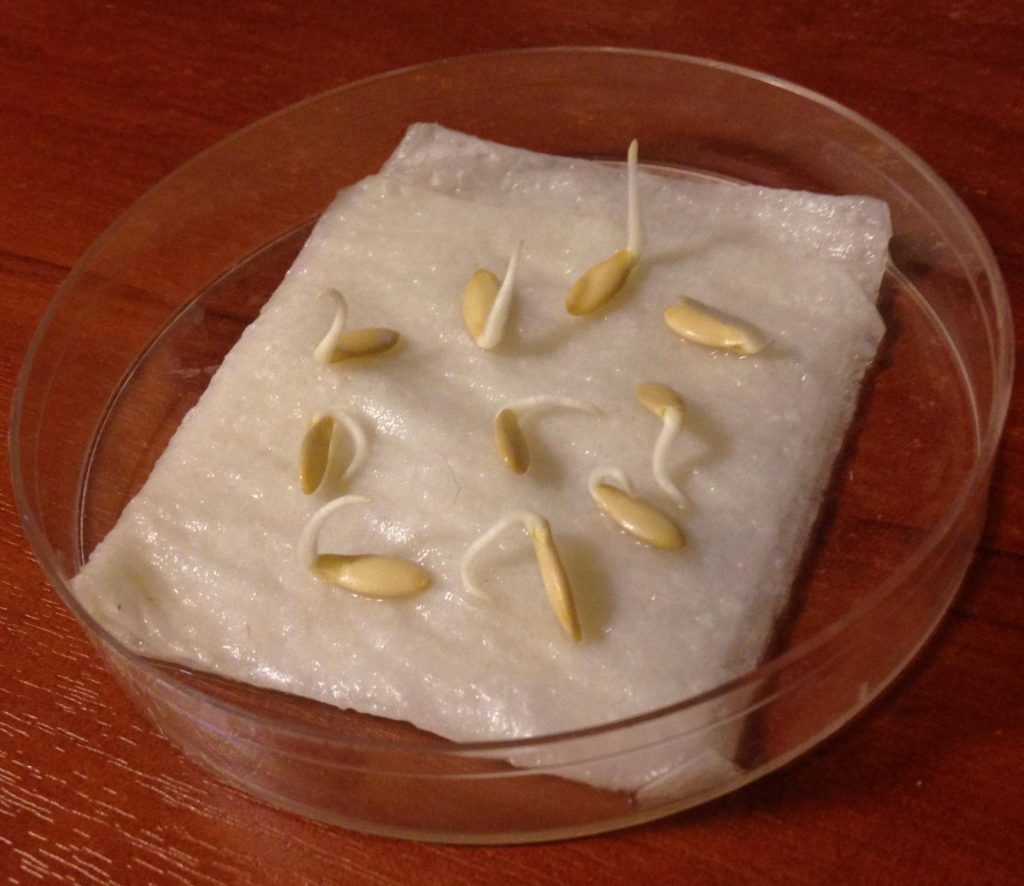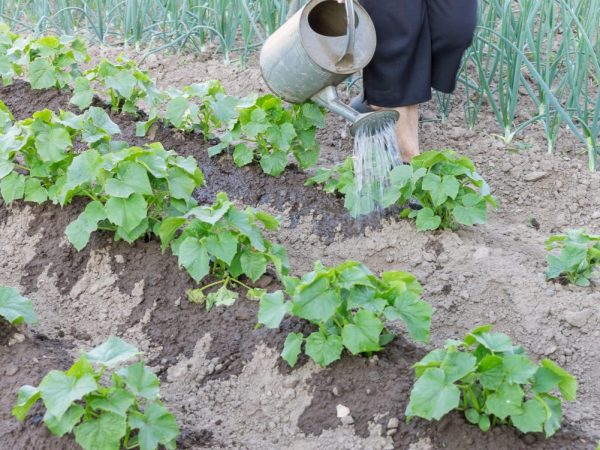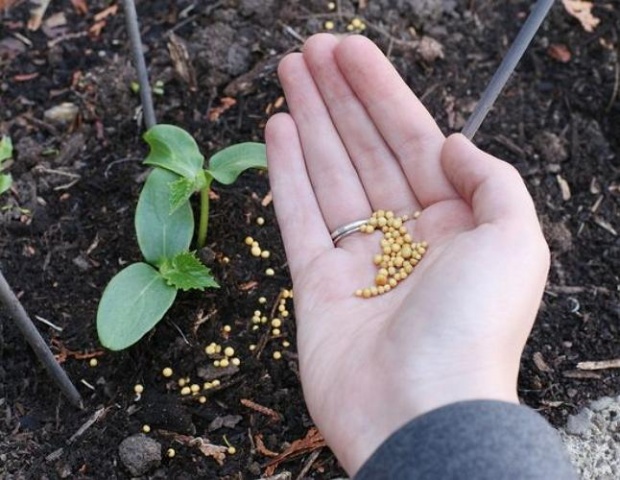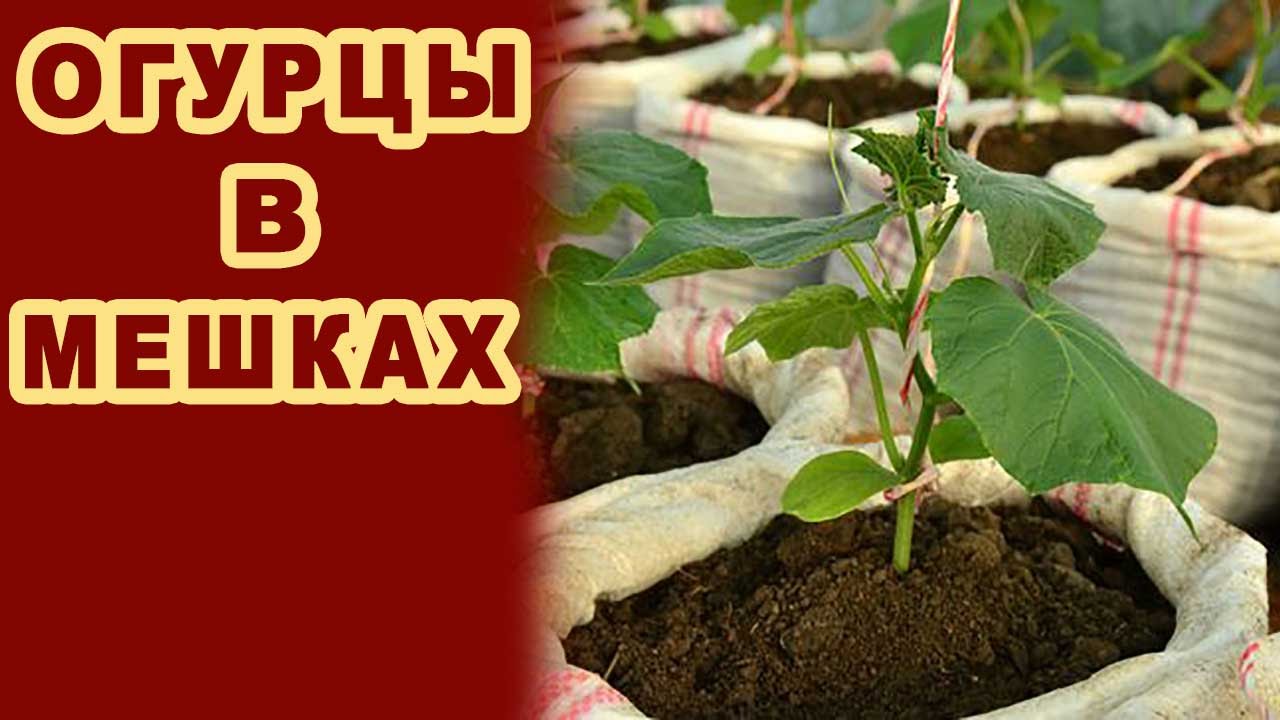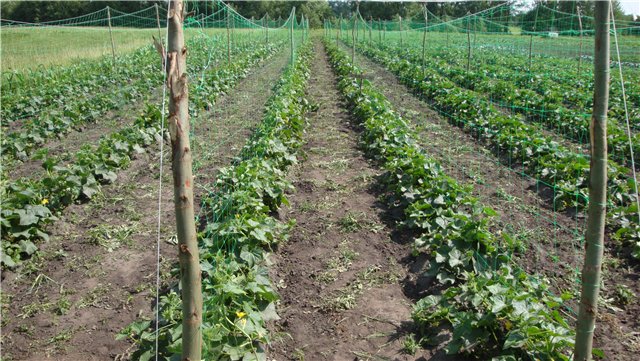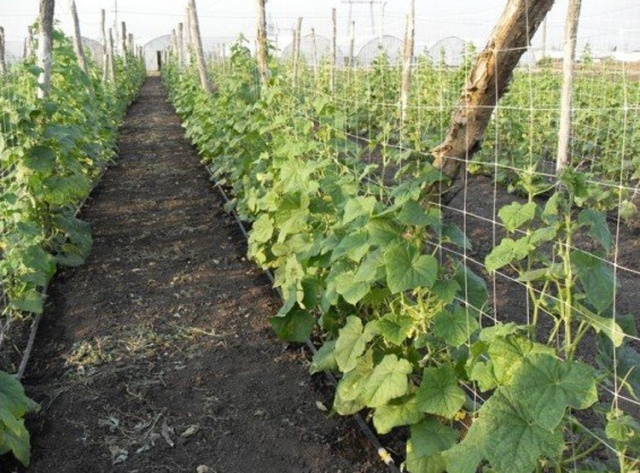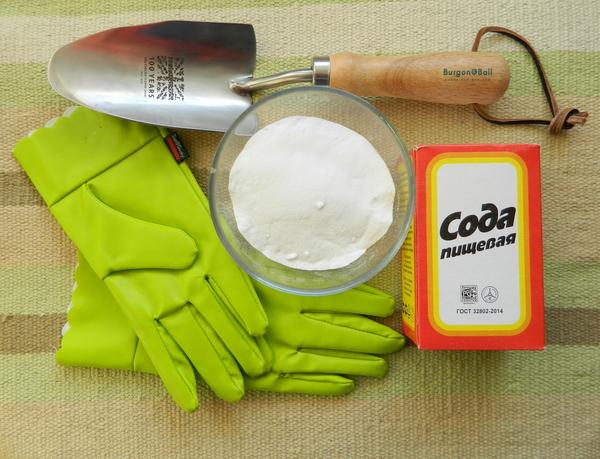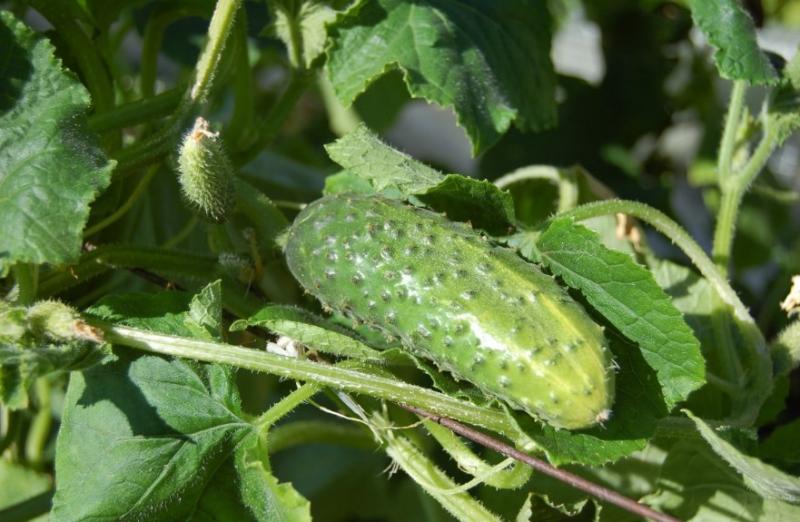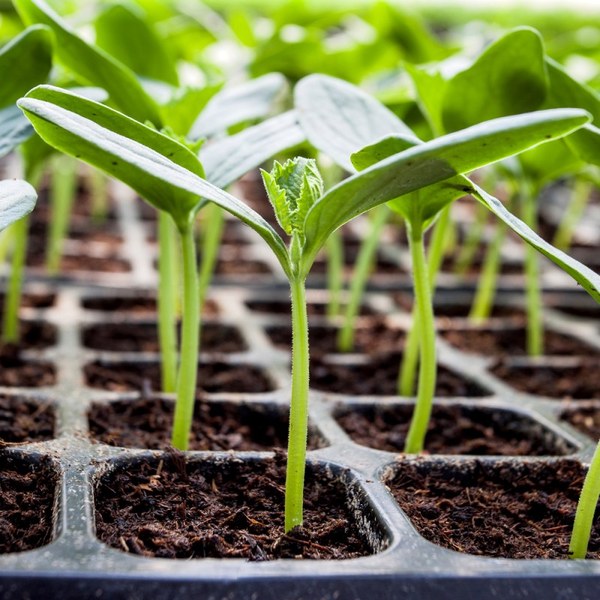Content:
Each gardener tries to plant as many vegetables as possible on his site. This allows you to get natural vitamins in the summer and make useful preparations with which you can delight your family in winter. To get an excellent harvest, a summer resident should know everything about cucumbers: from planting to growing.
Choosing a place for planting cucumbers
In the construction of cucumber beds, the climatic zone is of great importance. In the south, where there is a lot of sun, you can plant seeds on a flat surface. There is a shortage of heat in the northern regions, so high beds are being built there. Plants planted in the lowlands will receive less solar heat, and the cold air that collects there can destroy them.
If the terrain is mountainous, the ridges are formed transversely; on a flat plane - from east to west (this way they will warm up more evenly from all sides). If the groundwater is located close to the surface, high holes are made one meter apart.
Cucumbers can be grown along the southern walls of various buildings or blank fences. If there are none, then trellises are lined up, which are covered with a film on the leeward side. Without protection, the soil will quickly dry out, the whips will turn over and break from the wind.
Wherever the cucumbers are planted in the summer cottage, you need to remember that they need heat from the sun throughout the day. And, if in the south a little shading is still allowed in the morning or evening, then in the north of the roads there is every ray of the sun.
Landing features
The soil for planting should be light loamy or sandy loam. Before growing cucumbers in spring, the place of their planting is being prepared in stages from autumn. A wide strip is chosen, soil 30 - 35 cm deep is dug out of it, plant residues are laid in its place: grass, straw, leaves, small chips. The same earth is poured from above, compacted. By decomposing, plant residues will warm the soil, helping cucumbers to hatch faster.
There are many methods of planting cucumbers: dry or sprouted seeds, seedlings, indoors and outdoors. Practice shows that the most reliable is sowing with dry seeds in a greenhouse covered with foil. In addition, cucumbers are planted in buckets, barrels, city dwellers even grow them on the balcony.
Before growing cucumbers, the seeds need to be warmed up for a week. This can be done on the windowsill located in the southern part of the house. Then the seeds are soaked for 1 day in an epin solution (5 drops per 100 ml of water) or any other growth stimulator.
Cucumbers are planted in the 20th of May, after a steady heat comes on the street. Depressions are made in the garden in a checkerboard pattern at a distance of 30 cm from each other. They spill well with warm water. 500 g of compost is poured into each depression, and a thin layer of earth is on top. 4 seeds are placed in the holes to a depth of 2 cm. When the seedlings hatch, one, the most powerful, is left, the rest are removed.
If planting is carried out in open ground, each plant should have 2 - 3 leaves, if in a protected one - 5 - 6. There should be 3 - 4 bushes per 1 m².
When planting a seed in a peat-baked pot with further planting it in the ground, the plant takes root faster, it is easier to care for it. The seedling does not need to be removed from the container, and the roots grow through the container without injury. The pots have a porous, breathable wall that allows water and oxygen to flow to the seedling roots.
When all the seedlings are planted, a film greenhouse is built over the garden bed. There he must remain until late autumn, until the entire harvest is collected. Depending on the climatic conditions, the film is removed or covered.
With this method of cultivation, the cucumbers are not tied up, their lashes spread freely along the ground. Plants are less susceptible to various diseases due to their shelter in damp weather. This technology also extends the harvest season. Unlike greenhouse cucumbers, greenhouse-grown cucumbers require a garter.
Care and cultivation
Caring for cucumbers consists in timely watering, weeding, feeding, preventing diseases.
Watering
Cucumber loves moisture very much. Its roots are close to the surface, so the soil should always be moist. Watering the plant depends on the weather conditions. In most cases, irrigate every other day.
The water should be well heated. For these purposes, a barrel or other container is placed in a sunny section of the garden, into which water is poured for warming. It is unacceptable to water in hot weather on a leaf. The most favorable period for this is morning or evening.
Loosening
The soil must be loosened after each watering or rain. If the cucumber lashes are tied up, this process is carried out without injury to the bush, but if they spread along the ground, they should not be pulled and shifted. You can gently lift, loosen the ground, and then lower the branches back into place.
To protect the soil from drying out, the beds are sprinkled with peat or covered with weeds. But at the same time, you need to ensure that slugs do not appear under the mulch, eating fruits at night.
Fertilizer
The growth of cucumbers will be accelerated by both feeding with manure infusion and fertilizing with compost. Healthy cucumbers have dark green leaves. With a lack of nitrogen, they acquire a pale color, the plant stops growing, and the tip of the fruit sharpens. How to grow a beautiful cucumber? To remedy the situation, Art. tablespoons of ammonium nitrate dissolves in 1 bucket of water and plants are spilled with this solution.
With a lack of phosphorus, young leaves are formed small, the edges of old ones turn brown. For feeding, 5 tbsp are bred. tablespoons of superphosphate in 1 bucket of water.
When the plant lacks potassium, a brown film forms between the veins of the leaf, the fruit is too expanded towards the top. To replenish potassium in the soil, wood ash wakes up around the stem, or 3 tbsp is dissolved in 1 bucket of water. tablespoons of potassium salt and plants are shed with this composition.
Bush formation
When the 4th leaf appears on the plant, pinch the top. After that, shoots begin to actively hatch from the lateral sinuses. When they grow up to 20 cm, they are pinched again. Zelentsy mainly appear on shoots that have grown after the second pinching.
When the bush has formed, you need to make sure that at a distance of 10-15 cm from its base there are no torn, yellowed leaves touching the ground. If found, delete and destroy.
Disease and pest control
The most common diseases in cucumbers are downy mildew and powdery mildew. In the first case, the plant burns out very quickly: first the old leaves turn yellow, then the young ones, the whips dry up and the bush dies.Downy mildew develops with an excess of moisture and is able to maintain spores for 6 years. Plants need to be sprayed with copper-containing preparations before harvesting, constantly changing them.
With powdery mildew, whitish spots form on the leaves. They are at first single, then cover the entire sheet. The infection even spreads to the weeds growing nearby. To treat the disease, the bushes are sprayed with fungicides.
Another common disease in cucumbers is mosaic. This is when discolored spots form on the leaves, flowers fall. To combat the disease, a milk solution is used (1 liter of milk per 1 bucket of water with the addition of 10 drops of iodine).
Of the pests, cucumbers attack slugs, melon aphids, whiteflies. To combat aphids, a dandelion infusion is used: 200 g of crushed roots, 400 g of leaves are infused in 1 bucket of water for 2 hours, then 30 g of laundry soap is added and the plant is sprayed.
To combat slugs, the soil around the ridges is sprinkled with dry mustard or treated with an aqueous solution (100 g of powder per 1 bucket of water). The procedure is carried out in the evening, since it is at this time that slugs crawl out of the shelters.
To get rid of whitefly, cucumbers are sprayed with actellik, inta-vir and other drugs. In the greenhouse, the premises are treated with sulfur dioxide.
Increased yield
To obtain a bountiful harvest, the agricultural technology of cucumbers must be followed. There are several secrets to growing. They need to be studied before taking on growing cucumbers.
- You need to harvest it regularly every 2 days. The greens that were missed or at the wrong time quickly outgrow and turn yellow. In this case, nutrients go to seed formation, and not to the growth of young fruits and the formation of new ovaries. The quality and quantity of zelents decreases.
- After the first harvest, the leaves of the plant coarsen, fewer fruits are tied, the roots are bare. To form new roots, earth mixed with humus is poured to the base of the bush. Another effective method of plant rejuvenation is foliar feeding with a urea solution (10 g per 1 bucket of water) or a solution of trace elements (1 tablet per 1 bucket of water). As a result, metabolism is normalized in the leaves, and female and male flowers are formed again. The second harvest wave soon begins. This method is often used when growing cucumbers in polycarbonate greenhouses.
- At the end of August, oats are sown on the land intended next year for cucumbers. Its roots secrete substances that disinfect the soil, while causative agents of various diseases die. In winter, the roots die off, and in the spring they are broken with a hoe and quickly decompose in the ground.
- Compliance with crop rotation is an important measure for the prevention of various diseases. It takes 4 years for all pathogens typical for the pumpkin crop to disappear from the ground. Also, this gap is needed, because cucumbers cannot transfer their root secretions.
- For bee-pollinated hybrids, you need to plant a pollinator variety (1 in 9-10 plants). In the absence of bees, pollination is carried out independently: the anther of a barren flower is carried out along the stigma of a female flower.
All this knowledge about how to grow cucumbers correctly makes it possible for the gardener to harvest until the very frost. Hand-grown farm cucumbers will be as tasty and healthy as possible.
